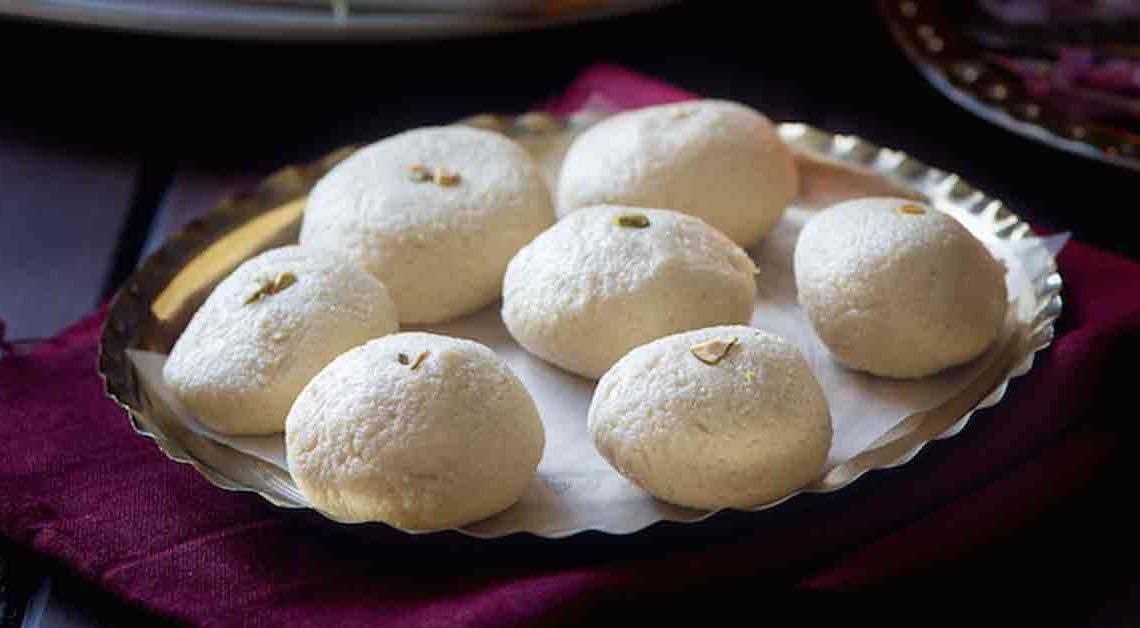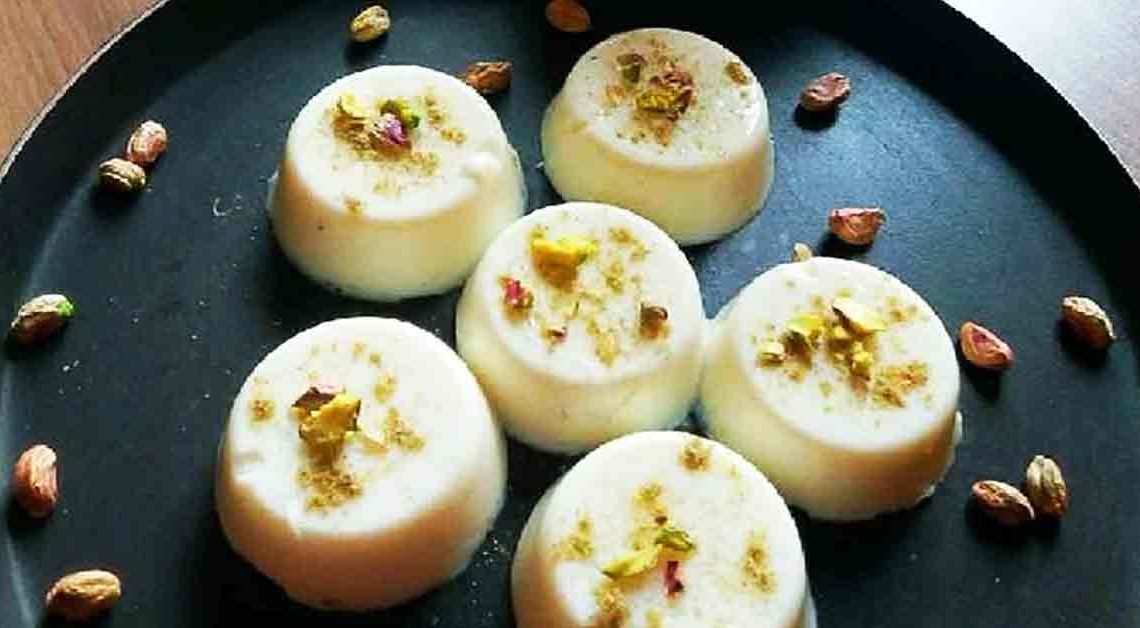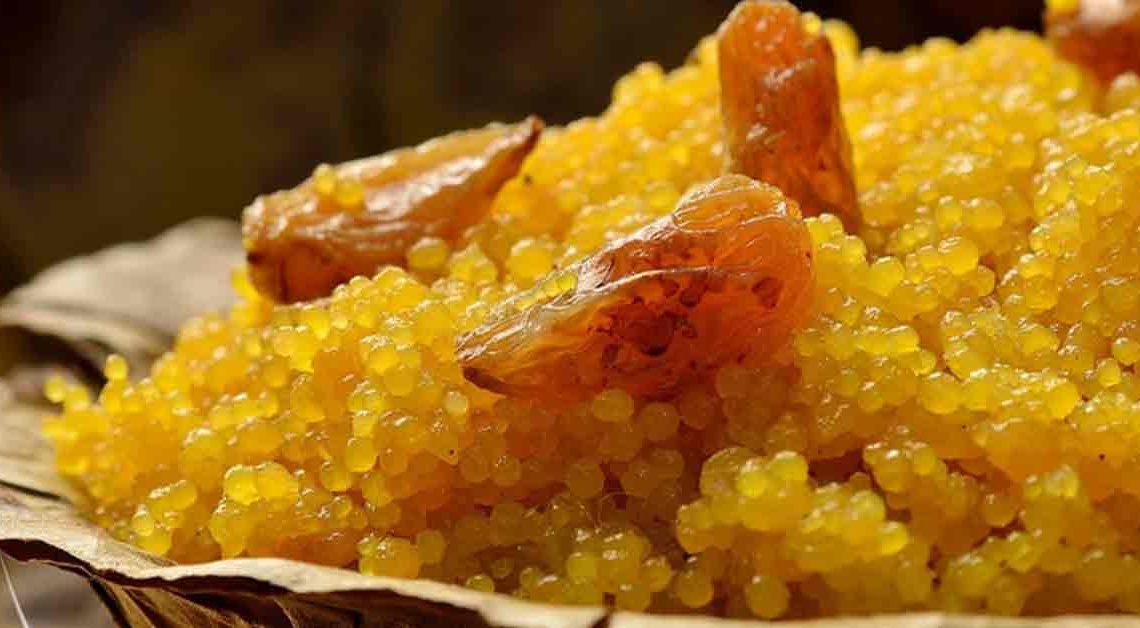Indulge in the Divine Delight of Kacha Gola Sandesh

Are you ready to embark on a tantalizing journey through the rich culinary traditions of Bengal? Join Mithainama! as we explore the delightful world of Kacha Gola Sandesh, a sweet that’s nothing short of a culinary masterpiece. In this delectable adventure, we’ll uncover the fascinating history, the art of crafting this velvety sweet, and the sheer joy it brings to taste buds.
Kacha Golla Sandesh, a celebrated Bengali sweet, is more than just a dessert; it’s an embodiment of love, culture, and tradition. It’s a sweet that has graced countless celebrations, from grand festivals to intimate family gatherings, making it an integral part of Bengali culture. The name ‘Kacha Golla’ translates to ‘raw ball,’ and it hints at the simplicity of its ingredients while hiding the sheer complexity of its flavors.
Join us on this epicurean adventure, and let’s savor the exquisite delight that is Kacha Golla Sandesh. Get ready to discover the secrets and stories behind this cherished sweet as we delve into the heart of Bengal’s culinary heritage.
Origin of Kacha Gola Sandesh
Kacha Golla, also known as Kancha Golla or Raw Sandesh, is a traditional Bengali sweet with a fascinating history that dates back to the heart of West Bengal, India. The word “Kacha” or “Kancha” means “raw,” signifying its uncooked nature. This distinctive sweet has its roots deeply embedded in the cultural and culinary traditions of Bengal.
The exact origin of Kacha Golla is not well-documented, but it is believed to have been created in Bengal several centuries ago. Bengali sweets have a long and storied history, with the region known for its love of milk-based sweets. Kacha Golla is a fine example of this passion for dairy-centric desserts.
Kacha Golla has become an integral part of Bengali culture and is often prepared and enjoyed during various festivals, special occasions, and everyday life. Its enduring popularity is a testament to its delectable taste and the rich culinary heritage of the region. Whether enjoyed at home, in sweet shops, or served as prasad in temples, Kacha Golla remains a symbol of Bengal’s sweet traditions and culinary excellence.
History of Kacha Gola Sandesh
The history can be traced back to the rich culinary traditions of Bengal, India. This delectable sweet has a longstanding heritage that spans several centuries. While there isn’t a specific documented origin story for Kacha Gola, its evolution and popularity are deeply intertwined with the culture and traditions of Bengal.
Over the years, Kacha Gola Sandesh has become an integral part of Bengali cuisine and culture. It is not only enjoyed as a dessert but also holds a significant place in various rituals and celebrations. The sweet is often prepared during festivals, family gatherings, and special occasions, symbolizing the joy and togetherness that food can bring.
The legacy of Kacha Gola Sandesh continues to thrive, and its popularity has extended well beyond the borders of Bengal. Today, this sweet delight can be found in sweet shops and dessert menus across India and even in Bengali communities worldwide, carrying forward the tradition and flavors of this beloved delicacy.
Cultural Significance
Kacha Gola, a delectable Bengali sweet, holds significant cultural importance within Bengal and the wider Indian subcontinent. Its cultural significance can be observed in various aspects of Bengali traditions and celebrations:
Festivals and Celebrations: Kacha Gola plays a prominent role in Bengali festivals and celebrations. It is often prepared and shared during occasions such as Durga Puja, Diwali, Holi, and Pohela Boishakh (Bengali New Year). The sweet is an essential part of the prasad (offerings) made to deities during religious rituals, emphasizing its sacred role in these events.
Culinary Heritage: It is a testament to the rich culinary heritage of Bengal. It showcases the expertise of Bengali sweet-makers who have perfected the art of crafting sweets from chhana and sugar. Its enduring popularity reflects the deep love for sweets in Bengali culture.
Family and Community Bonding: The preparation and sharing often bring families and communities together. Making this sweet at home or buying it from local sweet shops is a cherished tradition, reinforcing the importance of togetherness and sharing in Bengali culture.
Where is Kacha Gola Famous?
Kacha Gola is particularly famous in the Indian state of West Bengal, which is the heartland of its origin and where it holds a special place in the culinary and cultural traditions. It is an integral part of Bengali cuisine and is cherished by people in West Bengal as well as by the Bengali diaspora in other parts of India and around the world.
While it is most famous in West Bengal, Kacha Gola is also enjoyed and appreciated in other Indian states with Bengali communities, such as Assam, Tripura, and parts of Jharkhand, Bihar, and Odisha. In these regions, you can find Bengali sweet shops or eateries that offer Kacha Gola as part of their menu, catering to the preferences of the local Bengali population.
Interesting Facts and Trivia
- The primary ingredient of Kacha Gola is chhana, which is a type of cottage cheese made by curdling milk. This fresh cheese is the foundation of many Bengali sweets.
- Creating perfect chhana, the key ingredient in Kacha Gola, is an art in itself. It requires precise control of temperature and the right amount of acid (usually lemon juice) to curdle the milk while keeping it tender.
- It is made with minimal ingredients, typically consisting of chhana, sugar, and flavorings such as cardamom, saffron, or rose water. This simplicity enhances its appeal.
- In winter, Kacha Gola is often made with Nolen Gurer, giving it a distinct flavor and making it a seasonal delicacy.
- Kacha Gola serves as a symbol of Bengali identity, reflecting the region’s rich culinary heritage and cultural pride.
Did You Know?
Kacha Gola, the delectable Bengali sweet, offers not only a delightful taste but also several potential health benefits when consumed in moderation. Here’s why you might want to savor this treat:
- Kacha Gola is primarily made from chhana, a type of cottage cheese, which is an excellent source of protein. Protein is essential for building and repairing tissues in the body.
- Chhana used in Kacha Golla is a good source of calcium, which is vital for strong bones and teeth. Consuming this sweet can contribute to your daily calcium intake.
- Kacha Gola is generally low in saturated fat, which is beneficial for heart health when consumed as part of a balanced diet.
- The protein and fat in Kacha Golla can help increase feelings of fullness, making it a satisfying dessert that may prevent overindulgence in other less healthy sweets.
- Kacha Gola’s sweetness primarily comes from sugar, which is a natural sweetener when consumed in moderation. This can be a healthier choice compared to desserts with added artificial sweeteners.







